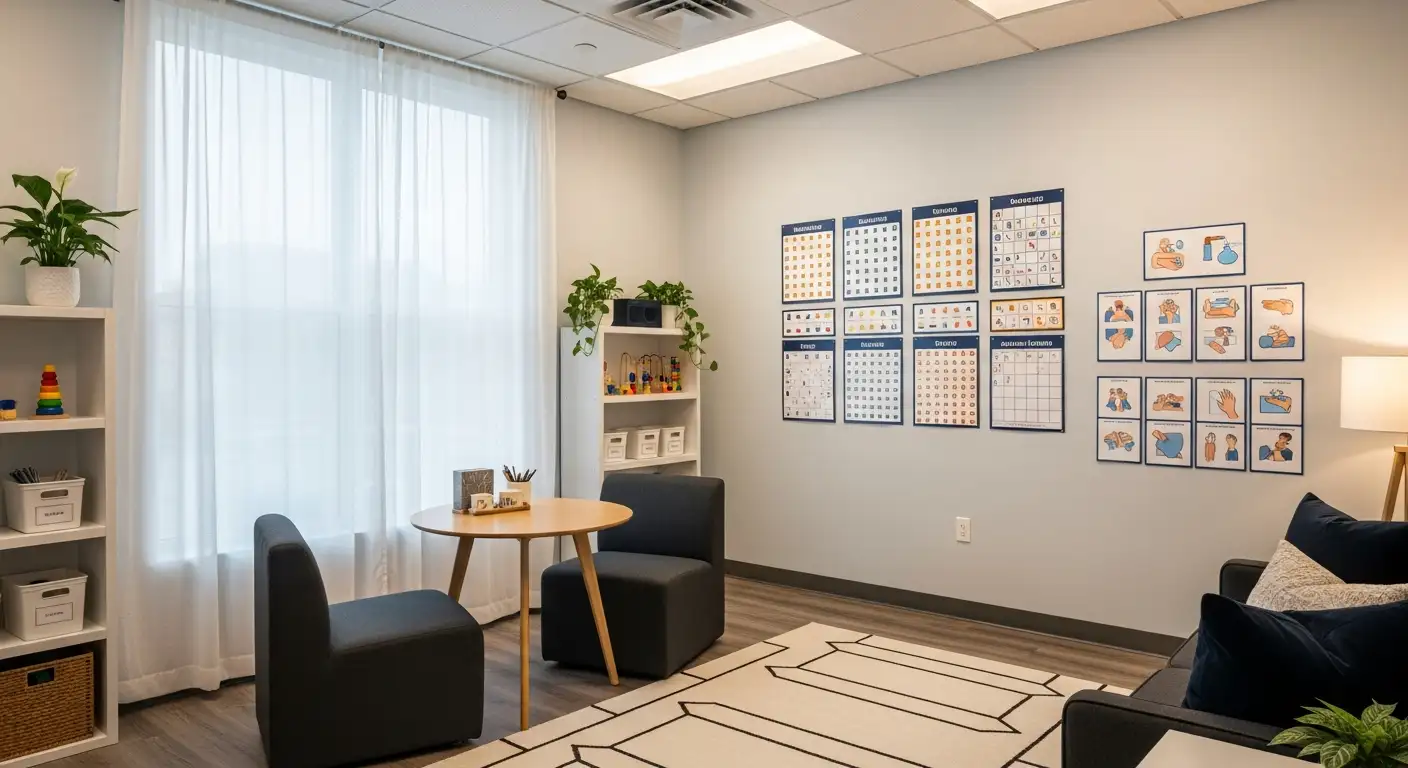The Impact of Physical Therapy on Pediatric Development


Understanding Pediatric Physical Therapy and Its Role in Development
Pediatric physical therapy is a specialized field dedicated to helping children reach important developmental milestones, improve their physical capabilities, and enhance their overall quality of life. From infancy through adolescence, physical therapy supports motor skills, strength, coordination, and independence, often beginning with early interventions. This comprehensive approach not only addresses existing challenges but also serves as a preventive strategy against future mobility issues, empowering children to participate fully in daily activities and social engagement.
Core Benefits of Pediatric Physical Therapy

What are the main benefits of pediatric physical therapy?
Pediatric physical therapy provides a wide range of advantages for children, helping them improve their physical abilities and overall development. One of the primary benefits is the enhancement of gross motor skills, such as crawling, walking, jumping, and running. These skills are essential for children to participate confidently in play, social activities, and daily routines.
In addition, physical therapy supports the development of fine motor skills, balance, coordination, and muscle strength. These improvements contribute to better posture, easier movement, and reduced risk of injuries in the future.
Early intervention plays a crucial role in pediatric therapy. Addressing developmental delays promptly can prevent further challenges and promote healthy growth. Therapists tailor exercises and activities to meet each child's unique needs, often using engaging, play-based methods.
A significant impact of pediatric physical therapy is the boost in confidence and social interaction. As children progress and become more mobile, they tend to participate more actively with peers, which enhances social skills and self-esteem.
Furthermore, the positive effects of therapy often extend into adulthood. Building a foundation of motor skills and physical confidence can support a child's independence, long-term health, and quality of life.
Overall, these benefits not only help children develop essential physical skills but also empower them to engage fully in their environment, fostering confidence, social bonds, and lifelong well-being.
Supporting Motor and Physical Development

How does physical therapy support motor skills and overall physical development in children?
Physical therapy significantly contributes to a child's motor and overall physical growth. Pediatric physical therapists help children reach essential developmental milestones such as sitting, crawling, and walking. They focus on enhancing balance, coordination, and muscle strength, which are crucial for independent movement.
Addressing issues like muscle weakness, poor coordination, and balance problems is an integral part of therapy. These challenges can delay motor development and hinder a child's ability to perform daily activities confidently.
Early intervention is vital. When children start physical therapy soon after noticing delays or difficulties, it can boost their mobility and social confidence. Therapists evaluate signs like favoring one side, frequent falls, and difficulty with movements or postures to determine whether therapy is needed.
Through targeted exercises and engaging, play-based activities, pediatric physical therapy helps children build strength, enhance coordination, and promote independence. This foundation supports their long-term participation in school, play, and everyday life, fostering physical well-being and emotional confidence.
Techniques and Approaches in Pediatric Physical Therapy

What techniques and methods are commonly used in pediatric physical therapy?
Pediatric physical therapy employs a variety of specialized techniques aimed at improving motor skills, strength, coordination, and overall mobility in children. One of the most prominent methods is neurodevelopmental treatment (NDT), which encourages typical movement patterns by guiding children through specific activities. This approach helps normalize muscle tone and enhance motor control, especially for children with neurological conditions like cerebral palsy.
Sensory integration therapy is another commonly used technique that involves multimodal sensory inputs—such as tactile, visual, and proprioceptive stimuli—to help children process sensory information more effectively. Improved sensory processing can lead to better motor planning and coordination.
Approaches like the Bobath and Vojta methods focus on stimulating reflexes and activating deep musculature. These reflex-based techniques support children in developing more controlled and purposeful movements.
Therapeutic exercises are tailored to each child's needs and often include stretching, resistance training, and balance activities. To make therapy engaging and functional, therapists typically incorporate play-based and real-life tasks like obstacle courses, animal walks, and activities on therapy balls. These exercises not only build strength and flexibility but also enhance coordination.
Additional modalities such as aquatic therapy leverage the properties of water to facilitate movement, decrease pain, and increase safety during exercises. Constraint-induced movement therapy (CIMT) is also used, particularly for children with hemiplegia, encouraging use of the affected limb by restraining the unaffected side.
Manual techniques, including myofascial release, are employed to reduce muscle tightness, improve tissue mobility, and alleviate pain. These hands-on approaches, combined with other therapies, help optimize functional movement and support overall child development.
In summary, pediatric physical therapists utilize a diverse toolkit of techniques—from reflex stimulation and sensory integration to play-based functional exercises and manual therapies—to address individual developmental needs effectively.
Importance of Early Intervention

At what age should children begin physical therapy for developmental concerns?
Children should start physical therapy as soon as developmental issues are identified, ideally within their first three years. Recognizing delays early, such as trouble sitting, crawling, or walking, can significantly influence outcomes.
How critical is the early period for motor development?
The first year to 18 months constitute a vital window for motor skills development. During this time, the child's brain exhibits high plasticity, making early intervention especially effective in improving movement, coordination, and muscle strength.
Why is prompt treatment essential?
Addressing delays promptly prevents the reinforcement of abnormal movement patterns, supports proper muscle development, and encourages social and emotional growth. Early therapy can also prevent long-term disabilities by tackling foundational issues early.
Can early physical therapy reduce future developmental challenges?
Yes, early intervention sets a strong foundation that promotes healthier physical, cognitive, and social outcomes. It can minimize the need for extensive later therapies or interventions.
How is therapy tailored to specific developmental milestones?
Therapists customize programs based on each child's age and developmental stage. For example, infants might focus on tummy time and head control, while older children work on walking, balance, and fine motor skills. Consistent, milestone-based approaches maximize progress.
In summary, initiating pediatric physical therapy early—preferably in the first three years—is crucial for optimizing motor development. The early period offers the best window to support normal growth, address delays, and reduce the risk of future problems.
Physical Therapy for Children with Special Needs
How does physical therapy influence children with special needs, such as Down syndrome?
Physical therapy plays a vital role in supporting children with various special needs, including Down syndrome, cerebral palsy, and autism spectrum disorder. For children with Down syndrome, PT focuses on enhancing muscle strength, improving motor skills, and increasing mobility. Early intervention is especially effective, as it can facilitate the achievement of crucial developmental milestones like crawling and walking.
Therapists employ tailored exercises that address common challenges such as hypotonia (muscle weakness) and joint laxity (loose joints). These include activities like obstacle courses, balance exercises, and aquatic therapy, which improve coordination, stability, and muscle tone. Using play-based and engaging activities ensures that children participate actively and enjoy the process.
In addition to physical improvements, PT encourages independence and boosts confidence. As children improve their physical abilities, they become more capable of participating in daily routines, social interactions, and play with peers. Overall, pediatric physical therapy aims to maximize physical function, promote growth, and enhance quality of life, helping children with special needs lead more active and fulfilling lives.
Addressing hypotonia and joint laxity
Children with conditions like Down syndrome often experience hypotonia and joint laxity, which can hinder movement and posture. Physical therapists utilize specific interventions such as strengthening exercises, proprioceptive training, and supportive techniques to improve muscle tone and joint stability. This attention reduces the risk of injury and helps the child develop better control over their movements.
Tailored exercises and interventions
Every child receives a personalized treatment plan that considers their unique needs and developmental level. Interventions may include motor learning practices, sensory integration techniques, and multimodal stimulation. Innovative therapies such as aquatic or hippotherapy (horseback riding therapy) further enhance engagement and motor outcomes.
Enhancing independence and confidence
Physical improvement translates into greater independence, allowing children to perform daily activities with less assistance. As mobility and coordination improve, children gain confidence, which encourages social participation and emotional well-being.
Using specialized activities and therapies
Therapists incorporate activities like obstacle courses, balance practices, and sensory-rich exercises. They also work closely with families to include supportive activities at home, ensuring continuous progress outside therapy sessions. This comprehensive, individualized approach helps children reach their full potential physically, socially, and emotionally.
Family and Community Involvement

What role do families and caregivers play in pediatric physical therapy?
Families and caregivers are integral to the success of pediatric physical therapy. They work closely with therapists, forming a partnership to support the child's development. This collaboration ensures that therapy is consistent and tailored to the child's environment.
One of the main responsibilities of families is to receive education and guidance from therapists. This includes understanding specific exercises, engaging in developmentally appropriate activities, and implementing strategies at home or in school settings. Empowered with this knowledge, parents and caregivers can reinforce therapeutic goals, leading to more effective and lasting progress.
Supporting development at home and school is crucial. Families help create a nurturing environment that encourages movement, confidence, and social interaction. They also advocate for their child's needs within educational and community settings, ensuring access to resources and accommodations that foster growth.
The role of families extends beyond day-to-day activities. They become active participants in planning and decision-making, voicing their child's needs and preferences. This advocacy promotes a child-centered approach that respects each child's unique abilities.
Community support and involvement from schools and local organizations strengthen the child's developmental journey. When families are engaged and supported, children benefit from a holistic approach that encompasses physical, cognitive, social, and emotional development.
Overall, fostering strong family involvement in pediatric physical therapy not only improves therapy outcomes but also builds children's confidence and resilience. Families become champions for their children's growth, ensuring they reach their full potential.
Maximizing Child Potential through Dedicated Physical Therapy
Pediatric physical therapy is a cornerstone of healthy childhood development, enhancing physical abilities, fostering independence, and improving overall well-being. When implemented early and tailored to each child's needs, it can dramatically transform life trajectories, particularly for children with developmental delays or chronic conditions. With ongoing advancements in techniques, multidisciplinary collaboration, and family involvement, pediatric physical therapy continues to evolve as a vital field. Its positive influence extends far beyond mobility, shaping confident, capable, and resilient individuals equipped to navigate life’s challenges. Supporting children’s growth through specialized therapeutic interventions ultimately contributes to a healthier, more inclusive society where every child has the opportunity to thrive.
References
- The Role of Physical Therapy In Child Development - Circle of Care
- A Brief Overview of Recent Pediatric Physical Therapy Practices and ...
- The Importance of Pediatric Physical Therapy
- Physical Therapy for Kids: Benefits, Goals & Our Approach | NAPA
- Effects of early physical therapy on motor development in children ...
- What Caregivers Should Know About Pediatric Physical Therapy
- Getting Kids Moving: Pediatric Physical Therapy
- Enhancing Child Development With Pediatric Physical Therapy
- Unlocking Potential: The Vital Role of Pediatric Physical Therapy
- Blending Fun With Function: Working as a Pediatric Physical Therapist
Recent articles

How ABA Therapy Teaches Problem-Solving Skills
Unlocking Potential: The Role of ABA Therapy in Developing Problem-Solving Skills

Can Autistic People Have Kids?
Parenting on the Spectrum: Strengths, Challenges, and Support for Autistic Parents

Is Your Autistic Adult Child Ready To Move Out?
Empowering Independence: Preparing Your Autistic Adult Child for Life on Their Own

The Role of ABA Therapy in Teaching Independent Living Skills
Unlocking Independence: How ABA Therapy Empowers Daily Living Skills

The Importance of Speech Therapy for Communication Development
Enhancing Communication: How Speech Therapy Shapes Childhood Development

How Behavior Analysis Helps Children Learn to Follow Instructions
Unlocking Skills: The Power of Behavior Analysis in Teaching Children to Follow Instructions


